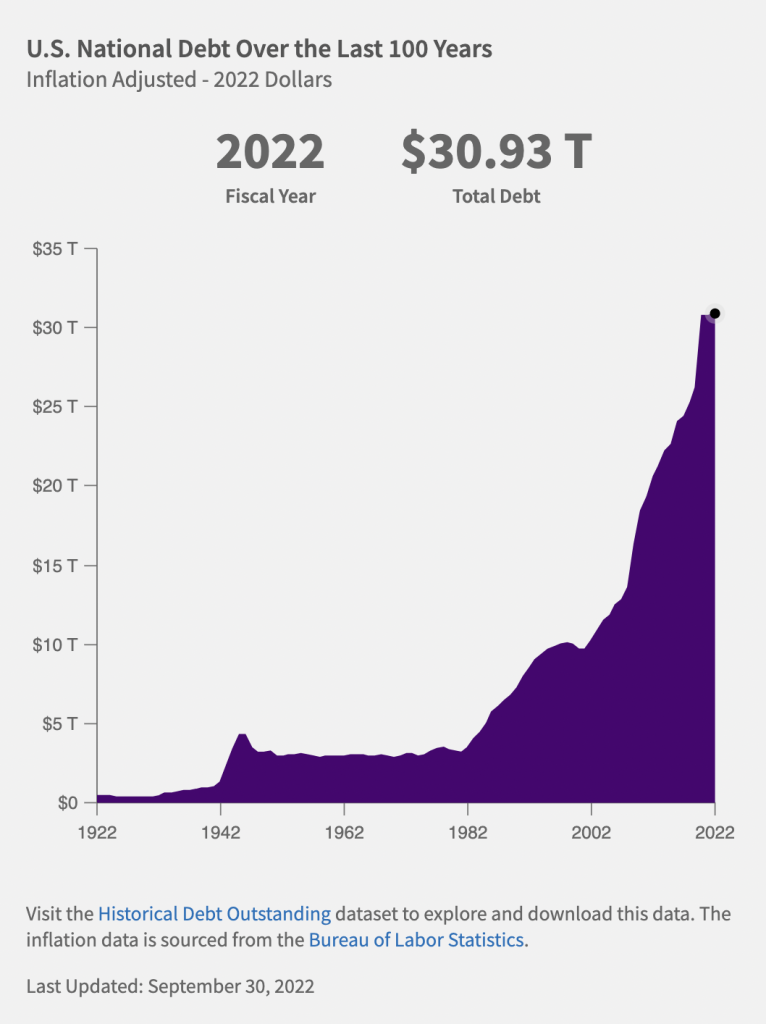2.5 Government’s Role in Managing the Economy
Adapted by Stephen Skripak
Monetary Policy
Monetary policy is exercised by the Federal Reserve System (“the Fed”), which is empowered to take various actions that decrease or increase the money supply and raise or lower short-term interest rates, making it harder or easier to borrow money. When the Fed believes that inflation is a problem, it will use contractionary policy to decrease the money supply and raise interest rates. When rates are higher, borrowers have to pay more for the money they borrow, and banks are more selective in making loans. Because money is “tighter”—more expensive to borrow—demand for goods and services will go down, and so will prices. In any case, that’s the theory.
The Fed will typically tighten or decrease the money supply during inflationary periods, making it harder to borrow money.
To counter a recession, the Fed uses expansionary policy to increase the money supply and reduce interest rates. With lower interest rates, it’s cheaper to borrow money, and banks are more willing to lend it. We then say that money is “easy.” Attractive interest rates encourage businesses to borrow money to expand production and encourage consumers to buy more goods and services. In theory, both sets of actions will help the economy escape or come out of a recession.
Fiscal Policy
Fiscal policy relies on the government’s powers of spending and taxation. Both taxation and government spending can be used to reduce or increase the total supply of money in the economy—the total amount, in other words, that businesses and consumers have to spend. When the country is in a recession, government policy is typically to increase spending, reduce taxes, or both. Such expansionary actions will put more money in the hands of businesses and consumers, encouraging businesses to expand and consumers to buy more goods and services. When the economy is experiencing inflation, the opposite policy is adopted: the government will decrease spending or increase taxes, or both. Because such contractionary measures reduce spending by businesses and consumers, prices come down and inflation eases.
The National Debt
If, in any given year, the government takes in more money (through taxes) than it spends on goods and services (for things such as defense, transportation, and social services), the result is a budget surplus. If, on the other hand, the government spends more than it takes in, we have a budget deficit (which the government pays off by borrowing through the issuance of Treasury bonds). Historically, deficits have occurred much more often than surpluses; typically, the government spends more than it takes in. Consequently, the U.S. government now has a total national debt of more than $19 trillion (Note: This number is moving too quickly for the authors to keep the graph current – you can see the current debt at http://www.usdebtclock.org/).

Key Takeaways
- Monetary policy is exercised by the Federal Reserve System (“the Fed”), which is empowered to take various actions that decrease or increase the money supply and raise or lower short-term interest rates
- When rates are higher, borrowers have to pay more for the money they borrow
- To counter a recession, the Fed uses expansionary policy to increase the money supply and reduce interest rates.
- Fiscal policy relies on the government’s powers of spending and taxation. When the country is in a recession, government policy is typically to increase spending, reduce taxes, or both. When the economy is experiencing inflation, the opposite policy is adopted: the government will decrease spending or increase taxes, or both.
- National Debt is the total amount of money that the U.S. Federal Government owes to its creditors. As of April 2020, the U.S. debt is 24.1 trillion.
is exercised by the Federal Reserve System (“the Fed”), which is empowered to take various actions that decrease or increase the money supply and raise or lower short-term interest rates, making it harder or easier to borrow money
more expensive to borrow—demand for goods and services will go down, and so will prices
With lower interest rates, it’s cheaper to borrow money, and banks are more willing to lend it
relies on the government’s powers of spending and taxation. Both taxation and government spending can be used to reduce or increase the total supply of money in the economy
in any given year, the government takes in more money (through taxes) than it spends on goods and services (for things such as defense, transportation, and social services)
the government spends more than it takes in

